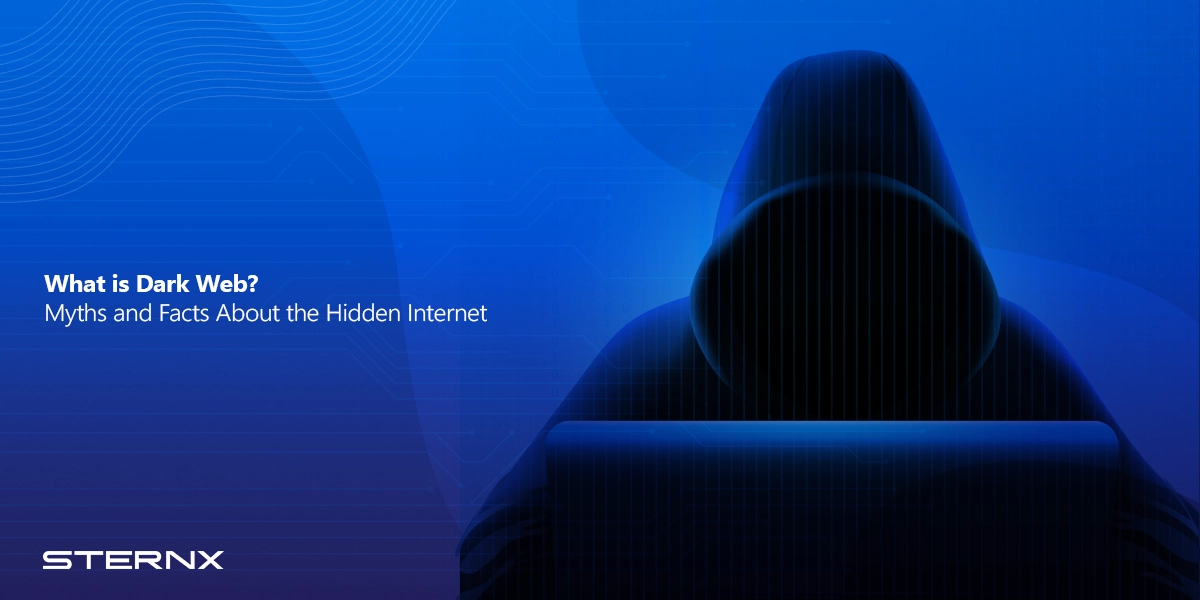Table of Contents
The internet is a vast and complex landscape, with layers upon layers of information, services, and networks. While most of us are familiar with the surface web, the part of the internet we access through search engines like Google and browsers like Chrome or Firefox, there exists a hidden realm known as the dark web. Shrouded in mystery and often associated with illicit activities, the dark web has piqued the curiosity of many while instilling fear in others. In this comprehensive guide, we’ll unravel the myths and reveal the facts about it, shedding light on its inner workings, purposes, and potential threats.
Understanding the Dark Web
The dark web, also referred to as the darknet, is a network of encrypted websites and services that are not indexed by traditional search engines and can only be accessed through specialized software and configurations. Unlike the surface web, which is easily accessible to anyone with an internet connection, it is designed to be anonymous, untraceable, and secure.
At its core, it operates on a network of interconnected computers called “nodes,” which relay data through a series of encrypted layers, making it incredibly difficult to trace the origin of information or identify users. This anonymity is achieved through the use of specialized software like The Onion Router (Tor), which bounces data through multiple nodes, providing a high degree of privacy and anonymity.
The Layers of the Internet
To better understand the this, it’s essential to know the difference between the various layers of the internet:
Surface Web:
This is the part of the internet that we’re all familiar with – websites, blogs, and online resources that can be accessed through traditional search engines like Google, Bing, or DuckDuckGo.
Deep Web:
The deep web refers to the vast amount of data and content that is not indexed by search engines. This includes databases, private networks, and other resources that require specific access credentials or permissions. Examples of the deep web include online banking portals, company intranets, and government databases.
Dark Web:
Is a small subset or part of the deep web, consisting of encrypted networks and websites that are intentionally hidden and can only be accessed through specialized software and configurations.
How Does the Dark Web Work?
The dark web relies on a network of interconnected nodes that relay data through multiple layers of encryption, making it virtually impossible to trace the origin of the information or identify the users involved. This process is facilitated by software like Tor (The Onion Router), which routes internet traffic through a series of encrypted nodes, providing anonymity and privacy to its users.
To have access to it, users must first install specialized software like the Tor browser, which is designed to conceal their IP addresses and encrypt their internet traffic. Once connected to the Tor network, users can navigate to various websites and services using special URLs that end with the “.onion” top-level domain.
The Parts of the Dark Web
While the dark web is often associated with illicit activities, it’s essential to understand that it encompasses various segments, each serving different purposes:
- Marketplaces: These are online platforms where individuals can buy and sell a wide range of goods and services, both legal and illegal. Some popular dark web marketplaces include Silk Road (now defunct), AlphaBay, and Dream Market.
- Communication Channels: It provides a secure and anonymous platform for communication, enabling individuals to share information, discuss topics, and collaborate without fear of surveillance or censorship.
- Whistleblowing and Activism: Whistleblowers and activists often utilize the it to share sensitive information, expose wrongdoings, and organize activities while protecting their identities.
- Privacy and Security: Many individuals and organizations use the dark web to protect their privacy and maintain their online anonymity, particularly in regions with strict internet censorship or surveillance.
The Difference Between the Deep Web and the Dark Web
While the terms “deep web” and “dark web” are often used interchangeably, there is a significant difference between the two:
The deep web refers to the vast amount of data and content that is not indexed by search engines but can be accessed with the right credentials or permissions. This includes databases, company intranets, and other private networks.
The dark web, on the other hand, is a small subset of the deep web that is intentionally hidden and can only be accessed through specialized software and configurations. It is designed to provide anonymity and privacy to its users.
Threats and Risks of the Dark Web
While it offers anonymity and privacy, it is also a breeding ground for various illicit and criminal activities and potential threats:
- Illegal Marketplaces: Some dark web marketplaces facilitate the sale of illegal goods and services, including drugs, weapons, stolen data, criminal activities and more.
- Cybercrime: The dark web is a haven for cybercriminals, who engage in criminal activities such as hacking, identity theft, phishing scams and malware distribution.
- Exploitation and Abuse: Unfortunately, it is also used for exploiting and abusing individuals, including the distribution of child exploitation material and human trafficking.
- Misinformation and Propaganda: The anonymity of the dark web makes it easier for individuals and groups to spread misinformation, hate speech, and propaganda without fear of repercussions.
Advantages and Disadvantages of the Dark Web
Like most technologies, the dark web has both advantages and disadvantages:
Advantages:
- Privacy and Anonymity: It provides internet users a secure and anonymous platform for individuals to communicate, share information, and access resources without fear of surveillance or censorship.
- Freedom of Expression: In regions with strict internet censorship or oppressive regimes, it offers a safe haven for individuals to express themselves freely and access information without restrictions.
- Whistleblowing and Activism: Whistleblowers and activists can utilize the it to share sensitive information, expose wrongdoings, and organize activities while their identities remains anonymous.
- Secure Communication: It provides a secure platform for individuals and organizations to communicate and share sensitive information without the risk of interception or surveillance.
Disadvantages:
- Illegal Activities: The anonymity of the dark web has made it a breeding ground for various illicit activities, including the sale of drugs, weapons, hacking bank accounts, and stolen data.
- Cybercrime and Malware: Cybercriminals often use the dark web to distribute malware, engage in hacking activities, and perpetrate other cybercrimes.
- Exploitation and Abuse: It has also been exploited for the distribution of child exploitation material, social media abuse, human trafficking, and other forms of abuse.
- Misinformation and Propaganda: The anonymity of the it makes it easier for individuals and groups to spread misinformation, hate speech, and propaganda without fear of repercussions.
Accessing the Dark Web
While accessing it is not illegal in most countries, it is important to understand the risks and potential consequences before venturing into this hidden realm. To access the dark web, users must first install specialized software like the Tor browser, which is designed to conceal their IP addresses and encrypt their internet traffic.
It’s crucial to note that accessing the dark web can be risky and may expose users to malware, phishing attempts, and other cyber threats. Additionally, engaging in illegal activities on the web can lead to severe legal consequences.
The Role of Law Enforcement and Monitoring
Law enforcement agencies around the world have dedicated resources to monitoring and investigating activities on the dark web, particularly those related to illegal marketplaces, cybercrime, and exploitation. Various techniques, including undercover operations, digital forensics, and collaboration with technology companies, are employed to identify and apprehend individuals engaging in illicit activities on the dark web.
Furthermore, many organizations and businesses have implemented dark web monitoring services to detect and mitigate potential threats, such as data breaches, intellectual property theft, and other cyber risks.
Conclusion
The dark web is a complex and multifaceted realm that offers both advantages and disadvantages. While it provides a platform for privacy, anonymity, and freedom of expression, it also harbors various illicit activities and potential threats. Understanding the inner workings, purposes, and risks is crucial for individuals and organizations alike.
As technology continues to evolve, the role and impact of the dark web will likely remain a topic of ongoing discussion and debate. It is essential for users to exercise caution and make informed decisions when navigating this hidden realm, while law enforcement agencies and technology companies work to mitigate potential threats and uphold the rule of law in the digital age.


